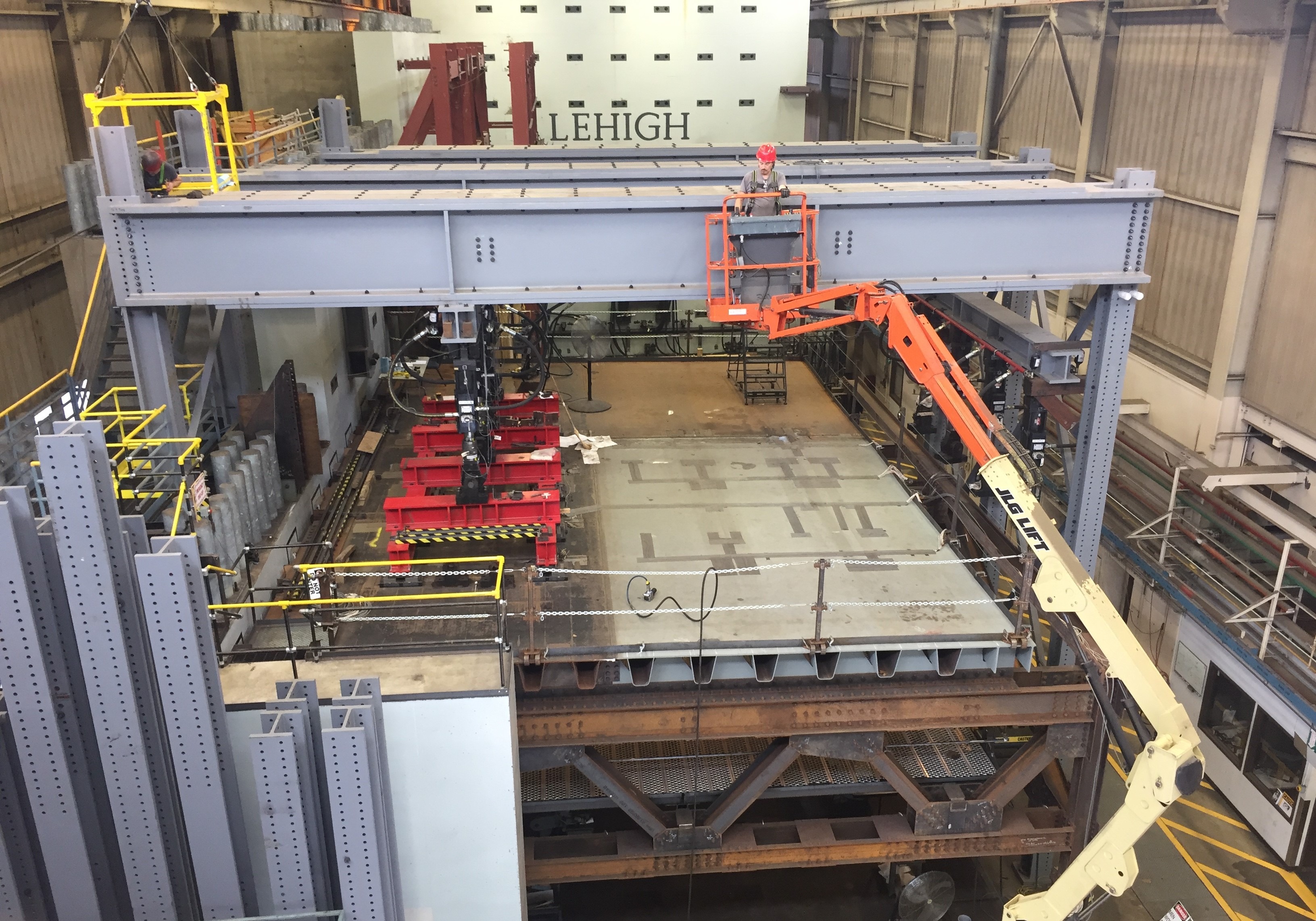
The Advanced Technology for Large Structural Systems (ATLSS) Engineering Research Center’s Multi-Directional Experimental Laboratory was constructed in 1987 under funding from the National Science Foundation to be a major facility for large-scale structural testing. In 2002, the laboratory was enhanced with the construction of the Natural Hazards Engineering Research Infrastructure (NHERI) Real-Time Multi-directional (RTMD) test facility. The laboratory continues to support both publicly and privately funded sponsored research and industrial testing programs.
The laboratory remains one of the largest of its kind in North America, with a 100 foot (30.5 m) by 40 foot (12.2 m) strong test floor, bordered on two adjacent sides by an extended L-shaped monolithic, rigid reaction wall that is 50 foot (15.2 m) tall at one side and steps down incrementally on the other side from 40 foot (12.2 m) to 30 foot (9.1 m) to 20 foot (6.1 m) tall.
The laboratory is equipped to generate multi-directional static and time-varying loads. The primary component of the loading system is the hydraulic power system, which operates at 3,000 psi (20.7 MPa) and 600 gpm (2270 liters/min). The RTMD Equipment Site operates at 3,500 psi (24.1 MPa). The hydraulic power system serves numerous, computer-driven servo-controlled hydraulic actuators simultaneously and independently using a system of 6 40 gpm (150 liters/min) independent hydraulic service manifolds. The hydraulic piping encircles the laboratory, while the hydraulic pumps, motors, reservoir, and cooling systems are in an adjacent pump house area. The equipment in the lab includes over 40 hydraulic actuators (including the 5 NHERI-dedicated actuators). Wineman System, MTS flex system, MTS 458, and Vickers computer-driven control systems are available for controlling the loads generated by the hydraulic actuators.
